Australian Realists and Impressionists II
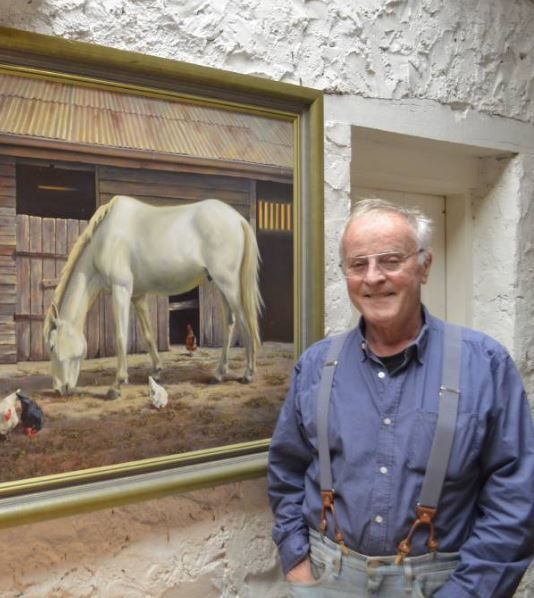
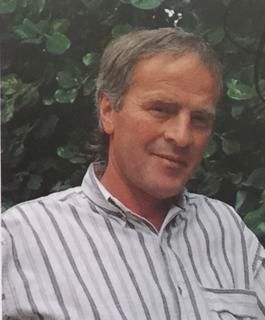
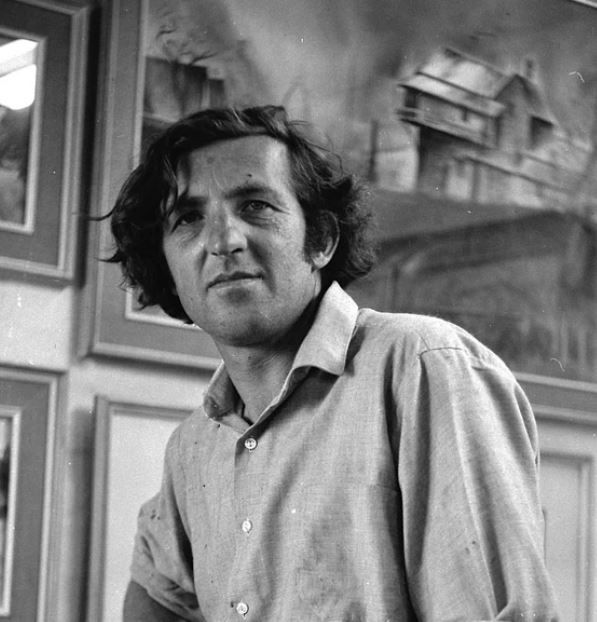
Today we continue to explore 20th century Australian artists - Ainslie Roberts was inspired by surrealism in his aboriginal art work; Alfred Engel seeks to provoke a spiritual interaction with the viewer; while for John Borrack, Cubism was an influence as was Cezanne.
Ainslie Roberts (1911 –1993) was born in London, emigrated with his family to South Australia in 1922 and spent his childhood with an aunt on a farm in the small town on Ardrossan, absorbing the atmosphere of the bush. Allowed to roam free with no schooling, it was natural for him to express his early love of the land by drawing it.
His formal education commenced at around age 15 and he soon excelled, Dux of the State in Qualifying Certificate in 1926, going on to complete 5 years at the South Australia School of Arts. He cultivated an interest in photography, and spent the war years (WWII) in the Intelligence Corps as official photographer.
Later he started his own advertising agency, however in 1950 the pressures of executive life took a toll, recuperating in the isolation of Central Australia.
As Roberts came to know the indigenous people, enhanced by his friendship with Charles Mountford (Australian anthropologist and photographer), he began to paint the myths of the Aborigines. In 1965 he joined forces with Charles Mountford providing paintings of the myths, documented by Charles, in a series of books on The Dreamtime, selling over 1 million copies1.
Ainslie saw his role as:
A communicator… a white man painting in the white man’s way and trying, visually to show the white people of Australia that this fascinating land they live in has a rich and ancient cultural heritage that they should be aware of and respect.
Quite forward thinking when we realise this was said more than 50 years ago. His painting style combines surrealism to achieve the fantasy inherent in Aboriginal beliefs. This is especially evident in Creation of the Sea.
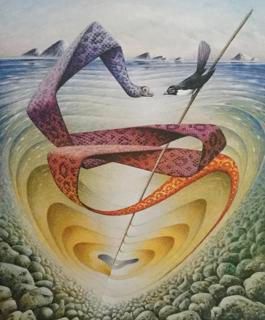
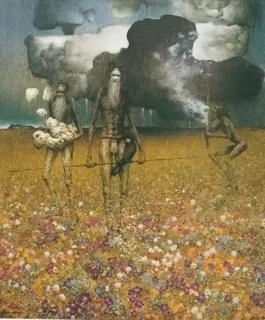
His body of work is fascinating and inspiring and can be viewed here
http://www.ainslieroberts.com/gallery.html
Alfred Heinrich Engel (1941 - ) was born in Innsbruck and emigrated to Australia in 1973, settling in South Australia and soon became a naturalised Australian. His style is described as Super Realism and his paintings hang in public and private collections in Australia, Europe and the USA.
What I am trying to do is provoke in the viewer a spiritual, interaction to the work. To awaken feelings of knowing, joy or sorrow, pleasure or stillness.
The painting that captured my attention was Evolving Consciousness – below - the brown paper revealing a beautiful woman and just visible the name ‘Vermeer’. Do you agree that the partially ripped brown paper, adds an air of mystery to this beautiful woman?
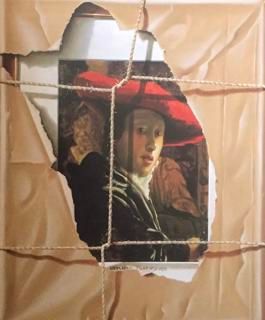
John Borrack (1933 - ) was born in Melbourne and has spent most of his life in Victoria, although he studied and painted extensively in France, Spain, Italy and the UK, specialising in watercolour, gouache and oil.
His work is heavily influenced by Cezanne but also from travelling to the spell binding gorges and interior of Central Australia.
The multiple viewpoints offered by earlier artists but principally by Cubism has had an effect on my work in relation to space one of the great elements that must be grasp in painting landscape.
For me there is something about trying to reconcile structure and form with those elements which the cubists avoided – light atmosphere and deep space which in themselves tend to destroy form. It is this ambiguity which exists in the vast spaces of our country that fascinate me.
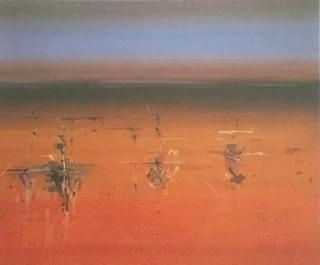
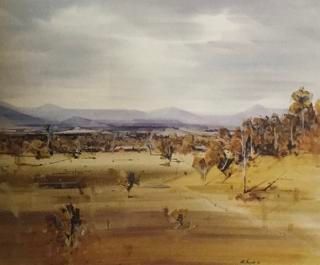
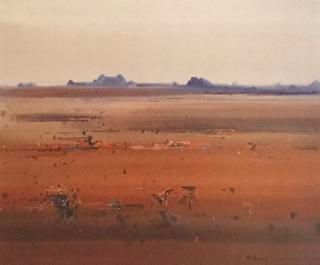
To view more of Borrack's fabulous landscapes take a look at his website:
https://johnborrack.com/
Tomorrow we will conclude with another three wonderful 20th century Australian artists.
All images (unless otherwsie stated), details and quotes taken from the book Australian Impressionist & Realist Artists
1 The Dreamtime - an image of the book cover and brief description can be found at this link https://www.morgansrarebooks.com/products/the-dreamtime-by-ainslie-roberts-and-charles-p-mountford-1)
